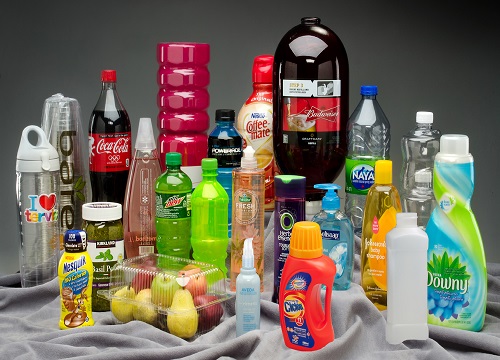It’s difficult to imagine modern life without plastics. Take a moment…
Our cars (seat cushions, air bags, bumpers, dashboards…)
Our fashion (nylon, spandex, polyester, faux fur…)
Our homes (carpeting, foam insulation, vinyl siding, composite decking…)
Our appliances (televisions, coffee makers, alarm clocks, electric toothbrushes…)
Our sports (football pads, bicycle helmets, surfboards, skis…)
Our health (preemie incubators, bandages, hygienic medical packaging, syringes…)
Our food packaging (tamper resistant film, takeout boxes, milk jugs, leftover containers…)
Shall I go on…?
We haven’t always had these modern marvels of innovation. Plastics are a relatively new invention. Here are my favorite additional highlights from the early history of plastic:
Parkesine (1862)
The first man-made plastic, called Parkesine after its inventor Alexander Parkes, is revealed at the Great International Exhibition in London. Created from part of the cell wall of plants (cellulose), Parkesine was transparent, moldable and retained its shape when cooled. The material was touted as able to do anything that natural rubber could—but less expensively.
Celluloid (1865)
American John Wesley Hyatt developed a way to make billiard balls from something other than ivory: cellulose nitrate. By the 1880s and 1890s companies made celluloid products such as bowls and combs that imitated ivory and tortoiseshell and other more expensive materials.
Rayon (1891)
A modified cellulose, rayon was first developed in Paris, France, by Louis Marie Hilaire Bernigaut, the Count of Chardonnet. He was searching for a way to produce a substitute for silk—he called his invention rayon since it was shiny and appeared to produce rays of light.
Bakelite (1907)
A totally synthetic plastic, Bakelite retained its shape and form even under stress and heat. In the 1920s and 1930s Bakelite jewelry, clocks and telephones became popular as people embraced their “unearthly-looking” appearance that did not resemble natural materials.
Cellophane (1912)
Created by a Swiss chemist trying to develop a waterproof table cloth—and later used to wrap Whitman’s candies—cellophane really took off in food packaging when DuPont made it moisture-resistant in 1927.
Vinyl (1920s)
Polyvinyl chloride, called PVC or vinyl, was developed to replace natural rubber and quickly proved itself one of the most versatile plastics. Vinyl is commonly used for blood bags and IV tubing and in building and construction products including siding, piping, roofing, tubing, hoses, flooring and electrical cable insulation.
“Plastic” (1930s)
The word “plastic” becomes a part of consumers’ everyday language to describe a wide variety of these new materials—which continues today.
Polyethylene (1930s)
Produced in fits and starts in the 1930s in the United Kingdom, polyethylene has become the most widely used plastic and is a mainstay of modern packaging: beverage bottles, milk jugs, bags, food storage containers and more.
Polyvinylidene Chloride (1933)
Discovered by accident by a Dow Chemical lab worker, polyvinylidene chloride (not to be confused with vinyl) was initially used to protect military equipment against saltwater. Since it clings to nearly anything and forms an oxygen barrier, it was introduced as a film for food packaging and became well-known as Saran Wrap.
Nylon (1939)
DuPont unveils stockings made from the new nylon at New York’s World Fair. Nylon rapidly replaced silk in clothing and military applications during World War II.
Polyester (1950)
Discovered in the 1940s, polyester became a big part of our culture when DuPont marketed a new fabric under the name “Dacron”—the first washable synthetic fabric.
Polypropylene (1950s)
Despite legal wrangling over its true inventors, polypropylene rapidly becomes one of the most popular plastics. Due to its versatility, it is used in nearly all plastic applications.
Polystyrene foam (1954)
Dow Chemical introduces polystyrene insulation under the brand name “Styrofoam®.” Polystyrene foam went on to be used in lightweight protective packaging, buoys/docks, movie sets, takeout containers and more.

